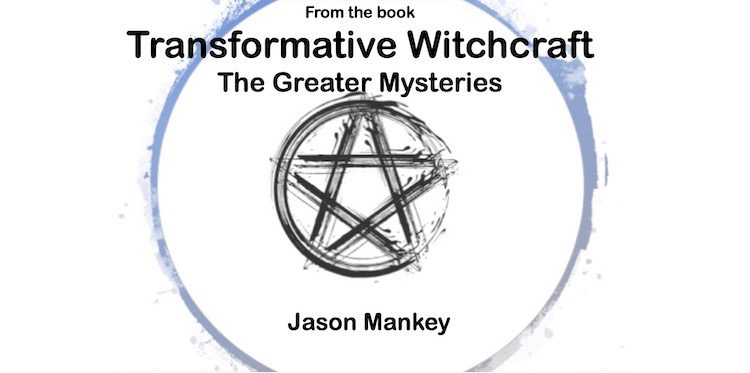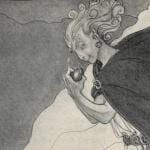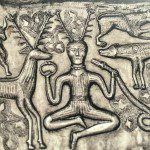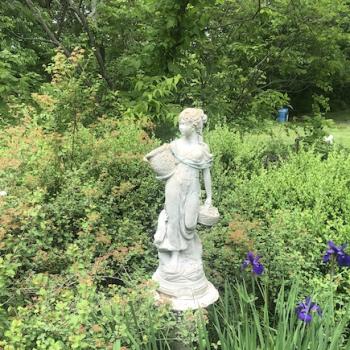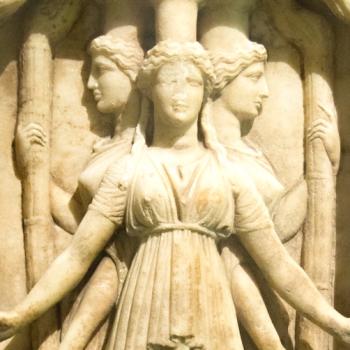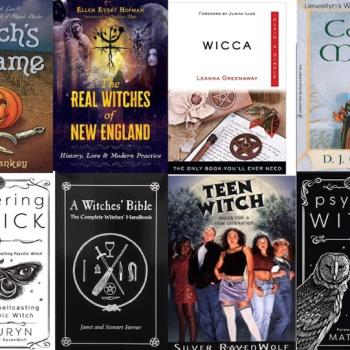Dion Fortune (birth name Violet Mary Firth, 1890–1946) is one of the most important figures in Witchcraft’s rebirth during the twentieth century. Though she did not identify as a Witch (or even a Pagan), many of her ideas would become a part of Wiccan-Witchcraft, and her 1938 novel The Sea Priestess articulated Witch ritual long before it would be made public. A highly trained occult practitioner, Fortune was a member of the Alpha et Omega order, an offshoot of the original Golden Dawn. She would also go on to found the esoteric order the Fraternity of Inner Light, which has continued into the present day and is now known as the Society of the Inner Light.
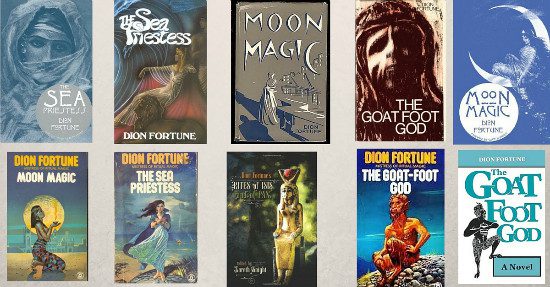
For the most part, The Sea Priestess is a rather bland novel, complete with casual racism and several other uncomfortable bits. But its occult passages shine, and Fortune’s descriptions of ritual in her novel are nearly hypnotic. If I had to name just one source for the modern ritual of drawing down the moon, I would pick The Sea Priestess because it so perfectly captures the essence of just what a drawing down rite feels like.
Fortune’s ideas about invoking deity are based around the idea of male/female polarity. In Fortune’s mind, drawing down required two polar opposites, female and male. It’s easiest to think of this like a battery, with a positive and a negative side. In a battery the sparks between these two polarities conduct energy. Creating great magick and invoking the gods required something similar: friction between female and male energies. One of the great things about The Sea Priestess is that its magickal formulas are shared in long bits of exposition by the character Vivien Le Fay Morgan:
“Do you not know that at the dawn of manifestation the gods wove the web of creation between the poles of the pairs of opposites, active and passive, positive and negative, and that all things are these two things in different ways and upon different levels, even priests and priestesses.” (1)

The idea of male/female pairings in magick is a rather old concept and predates Modern Witchcraft (and Fortune’s occult work) by several centuries. During the early modern period, magickal charmers (individuals who practiced magick with a specific item or spoken charm) believed that their power could be passed on only when exchanged with a member of the opposite sex. (2) To become a Witch in the American Ozarks required sexual initiation by a member of the opposite sex, at least according to popular tradition. (3) The idea of male/female polarity to create a magickal current was a common one in Fortune’s time, and would later become an important idea in early Modern Witchcraft. (Though for many of us today, it feels rather antiquated and limiting.)
Fortune’s drawing down rite unfolds almost as if it were an initiation and offers further insight into the nature of opposites and their power in magick and the workings of the universe:
“Learn now the mystery of the ebbing and flowing tides. That which is dynamic in the outer is latent in the inner, for that which is above is as that which is below, but after another manner. Isis of Nature awaiteth the coming of her Lord the Sun. She calls him. She draws him from the place of the dead.” (4)
In The Sea Priestess it’s readily apparent that Fortune’s Vivien Le Fay Morgan becomes someone (or perhaps something) else when channeling the goddess Isis. In one particularly striking passage, the book’s narrator and main protagonist remarks:
“Then a voice spoke that was not Morgan’s voice, curiously inhuman and metallic.
‘I am the Veiled Isis of the sanctuary. I am she that moveth as a shadow behind the tides of death and birth. I am she that cometh forth by night, and no man seeth my face. I am older than time and forgotten of the gods.’” (5)
As Fortune’s invocation ritual continues, Vivien Le Fay Morgan’s character begins to share bits of otherworldly poetry, with many of them sounding like an alternative version of the Charge of the Goddess:
I am the soundless bitter sea;
All things in the end shall come to me.
Mine is the kingdom of Persephone,
The inner earth, where lead the pathways three. Who drinks the waters of the hidden well,
Shall see things whereof he dare not tell
Shall tread the shadowy path that leads to me Diana of the Ways and Hecate,
Selene of the Moon, Persephone. (6)
Passages such as this one also reveal another lasting legacy of Dion Fortune’s work: the idea that “all the gods are one god, and all the goddesses are one goddess, and there is one initiator.” (7) The idea of an all-encompassing Goddess whose various facets are reflected in all the goddesses of pagan antiquity is still a common one in many Witchcraft circles, and it’s an idea beautifully expressed by Fortune. By weaving together the ancient paganisms of Greece, Egypt, Mesopotamia, and Celtic Britain, she articulates a big and grand Paganism that can be drawn upon by magick practitioners.
Fortune’s ideas about invocation and the nature of deity were not limited to just the divine feminine either. She wrote about the god Pan in her book The Goat-Foot God (1936) and referred to his resurgence in the nineteenth and twentieth centuries as the return of “vitamin P.” (8) She believed that the male aspect of deity could be invoked just as powerfully as the feminine one, though she never articulated those rites with the poetic grace found in The Sea Priestess.
It’s unknown if Fortune ever crossed paths with the likes of Gerald Gardner or Doreen Valiente, but as esoteric circles in England were rather small, it’s possible. In the end though, it probably doesn’t matter. The power of her invocation rite most likely inspired similar rites among Witches, and rare indeed is the well-read Witch who doesn’t own a book by Dion Fortune.
_____
Excerpted and adapted from the book Transformative Witchcraft: The Greater Mysteries by Jason Mankey, Copyright 2019, Llewellyn Worldwide. More excerpts from Transformative Witchcraft can be found below:
The Eleusian Mysteries: Initiation in the Ancient World
NOTES
1. Fortune, Dion, The Sea Priestess, Samuel Weiser Publisher, page 172. The Sea Priestess entered the public domain in 2017
2. Davies, Owen, Popular Magic: Cunning-folk in English History, Bloomsbury Academic Publishing, page 83. Pretty much anything by Owen Davies is a must-read for people interested in magickal history.
3. Randolph, Vance, Ozark Magic and Folklore, Dover Publications, page 267.
4. Fortune, The Sea Priestess, page 219.
5. Fortune, The Sea Priestess, page 220-221.
6. Fortune, The Sea Priestess, page 221-222
7. Fortune, The Sea Priestess, page 172.
8. Hutton, Ronald, Triumph of the Moon, Oxford, page 185 (hardcover edition).


